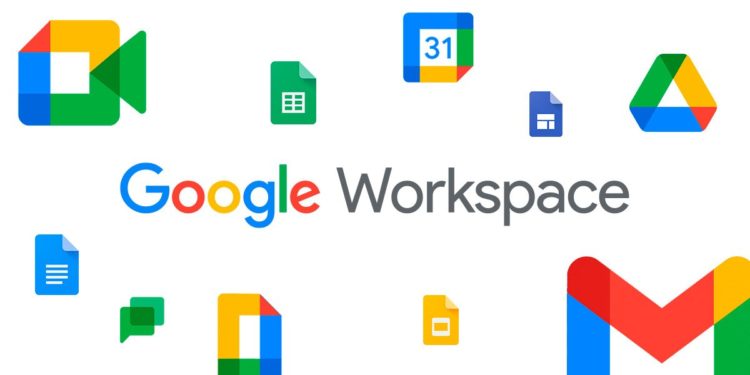Performance Marketing for Startups: Maximising ROI in a Limited Budget

As a growing startup, one golden rule that sets your business apart is this: never compromise standards for quick results. Sustainable success isn’t about cutting corners but making smart, strategic decisions that bring real, measurable growth. But beyond this, working with a tight budget may make every marketing decision feel like a high-stakes gamble. You don’t have the luxury of wasting money on ads that don’t convert or campaigns that don’t deliver results; no business does.
This is where performance marketing changes the game.
Unlike traditional marketing strategies, where businesses spend upfront with no guaranteed returns, performance marketing ensures you follow a more specific approach.
What is then is performance marketing?
W3webSchool [1]defines performance marketing as the direct and more definite form of digital marketing that deals with real-time data-driven results such as increased leads, sales, and business ROI. Hence, as a startup, before you spend your money on any marketing, ensure that the ad will generate results, like clicks, leads, or sales.
Interestingly, more startups are being launched every day in Africa. Yet, they struggle to scale them because the real problem isn’t just starting but running and sustaining them. Sadly, these challenges often arise from the often-over-looked issues, like poor brand awareness, limited funds, and an unstable market. However, with performance marketing, even a startup with minimal resources can create targeted, results-driven campaigns that compete effectively.
In this guide, I’ve broken down how African startups can use performance marketing to scale their business without overspending. You’ll discover practical, budget-friendly strategies, including how to identify the right audience, leverage cost-effective digital channels, and optimise campaigns for the best return on investment.

Source: G2 Learning Hub
Let’s get right into it and help you make the most out of every dollar, shilling, naira or cedis you put into marketing.
- Set Clear Goals and Track Progress
You cannot embark on a trip without having a destination in view. Similarly, you cannot start pushing ads without defining what you want to achieve. Keep your objectives S.M.A.R.T. (specific and measurable). Complex goals mean your marketing efforts will lack direction, and it will be difficult to determine success. Keep it simple and clear.
How to Do It:
- Use the “W” framework[2]. This includes questions like why you want to launch a particular ad, what you will benefit from it, who the people involved in the campaign, and how, when, and where it will be launched. After finding your answers, you can then proceed to the next stage.
- Identify what your business’ Key Performance Indicators (KPIs) are. What does your brand’s ad do well in?
2. You Must Know Your Audience’s and Their Pain Points
Not everyone is your customer. Trying to market to everyone will drain your budget and bring poor results. For example, if you run a catering business, your audience is likely busy and young professionals.
Aside from knowing who your customers are (this also includes other factors like their age, status, background, and different geographical conditions), you must find their pain points. What if the busy and young professionals in your community do not eat out? What if their major problem is getting someone who will come to prepare homemade meals for them? Now you see why you must do your market survey to understand what they truly need before launching your ads.
How to Do It:
- Use Google Analytics to gain more insight into your customers’ demographics, interests, and behaviours.
- Create customer personas. These are profiles of your ideal customers, comprising their pain points, buying habits, and online behaviour.
- Run surveys or engage in social media listening to hear directly from potential customers.
- Utilise your Return on Ad Spend (ROAS).[3] This strategy helps you track the success of past ads or campaigns.
3. Use Low-Cost-Effective Digital Channels
You don’t need a million-dollar budget to market effectively, especially because some of the best-performing marketing channels are free or low-cost. The key is to choose the right channels that offer the highest return on investment (ROI).
How to Do It:
- Social Media Marketing: Be more present in your social media pages. Show up as often as you can. Your potential customers need to earn your trust, and they can only do this when they see your posts. Just say something fun, exciting and informative to keep them engaged. Visit platforms like Quora, Pinterest, and Reddit for inspiration. Don’t forget to add a call-to-action CTA) at the end of every post; this is your number one lead generator.
What if I told you that you could also generate income in bytes with an ROI strategy known as Pay-Per-Click (PPC)[4]?
This is how this works: every time a user clicks on your ad, they pay a token in bytes. Google Ads and social media platforms work for this.

Source: Google
4. Test Everything
Throwing money into ads and hoping for the best is not a strategy. A study by Proxima asserts that companies unknowingly waste.[5] 40 – 60 per cent of their advertisement budget on ads that end up generating zero leads talk more of income. The smartest marketers test everything — from headlines to images, ad copy, and call-to-action buttons, to find what works best. An approach called A/B testing or split testing helps you compare two versions of an ad or landing page and see which one performs better.
How to Do It:
- Generate two distinct versions of the same message you want to communicate, but use different headlines, images, and CTAs.
- Share these posts on two social media platforms that have the same or close amount of audience/followers.
- Measure the performance of both contents.
You can repeat this process as often as you can. In doing so, you spend less and earn more from your marketing efforts.
5. Retarget and Convert Lost Customers
Not every visitor to your website or ad will buy immediately ? always remember that. However, that doesn’t mean they won’t buy later. Retargeting is a powerful way to remind these potential customers about your business. While there’s no fixed time to when your customers buy from you, a rule in marketing proposes the Rule of 7[6]. This rule states that your potential customer needs to see your ads at least seven times before they make a decision. You don’t know when your client will make up their mind. Don’t stop posting.
How to Do It:
- Track users who have previously visited your website.
- Don’t always wait for a miracle; follow up. Send reminder emails to people who abandoned their carts without completing a purchase.
- Be flexible with your offers. Give discounts or incentives to encourage them to come back.
Retargeting maximises your ad spend by converting people who already showed interest.

Source: Skillfloor
6. Work with Micro-Influencers for Maximum Impact
Big influencers charge big money. However, micro-influencers (people with 5K–50K followers) can also give you better results for a fraction of the cost. They have highly engaged audiences, and their recommendations feel more personal and authentic.
How to Do It:
- Find local influencers in your niche. Notorious social media platforms like Facebook, Instagram and TikTok are a good starting point.
- Offer them free products or commission-based payments instead of upfront cash.
- Have them create engaging content (reviews, live demos, testimonials) that showcases your product in a real-life setting.
Micro-influencers not only give you value for your money; they are also easy to speak to and connect with.
7. Use Data to Make Smarter Marketing Decisions
Guesswork is expensive. The most successful businesses make decisions based on data, not assumptions. By tracking your marketing performance, you can identify what works, stop what doesn’t, and scale what’s profitable.
How to Do It:
- Use Google Analytics to track website traffic and conversions.
- Monitor social media insights to see which posts get the most engagement.
- Track your ad spend vs. revenue to ensure you’re making a profit.
- Review and optimise campaigns regularly.
- Stay updated with new, current and future market trends.
Working with real-life data saves you from unnecessary mistakes. You don’t want to keep testing what works and does not without having concrete control of the information available to you. Similarly, consistent monitoring also helps you to ensure your marketing budget delivers the highest possible returns.
Final Thoughts
Having a fat budget doesn’t mean your startup will thrive; a small budget is not the solution either. However, performance marketing helps you get the most out of every penny you spend on marketing. Ensuring you only pay for results. But this result doesn’t happen overnight.
Start by outlining what you want to achieve. Go on to craft a detailed persona of your audience, including their needs and wants. Maximise marketing channels (free and paid for). Work with data to make more informed decisions.
The point is not how much you spend but how wisely you spend it.
Now, it’s time to take action. Start small, test, optimise, and scale. Your startup’s success is in your hands.
____________________________
Kelechi Anyikude is a Digital Marketing Strategist and a regular tech and business contributor at various other publications.
Connect with Kelechi about tech marketing and opportunities in scaling startups on LinkedIn (Kelechi Anyikude)







